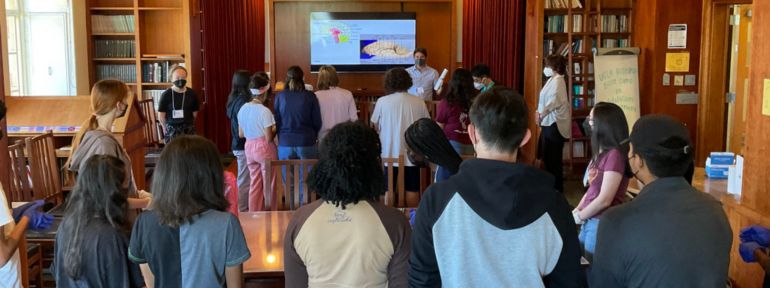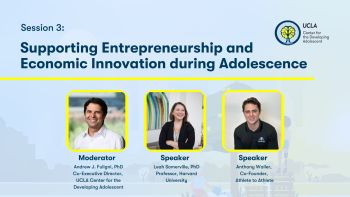This post was written by high school students from the Summer Research Boot Camp in the labs of Andrew Fuligni and Sandra Graham at UCLA, supported by UCLA Center for the Developing Adolescent, and led by Jenna Felkey, Piper Harris, Naomi Kline, and Xochitl Arlene Smola.
Authors: Kyan Nicholas Bernard, Asha Camile Kent, Tara McKillop, Kaelyn Cristel Morales, and Moises Salazar
Following the 30-minute shift in the Los Angeles Unified School District school day schedule, the topic of how sleep affects the adolescent brain has never been so relevant. Most of the public seemed onboard with this shift; students would get to sleep in, resulting in more hours of sleep, thus leading to an overall healthier lifestyle. Even with this surface-level understanding, some of us along, specifically parents, didn’t see how this new system would actually benefit teenagers. The main argument opposing the schedule shift was that teenagers would just go to sleep later, meaning they would cancel out the gained amount of sleep, making this change useless.
On top of this, angered parents were not thrilled with the prospect of having to shift their entire schedule due to what they perceived to be an ineffective attempt to help their adolescent’s health. Before this boot camp, we somewhat agreed, as the shift would mean our sports and extracurricular activities would end later when traffic to get home would be even worse. And, we thought, we would get home well after sunset, more tired, fatigued, and sleepy, with enough homework to keep us up past midnight. The boot camp provided some serious reasons as to why this change is not as counterintuitive as we once perceived, specifically due to aspects of our adolescent brain that react differently because of our age.
The two key takeaways from this topic were processes known as the circadian rhythm and homeostatic sleep pressure. The circadian rhythm is essentially an internal 24-hour clock that is used to keep a routine sleep-wake schedule, while homeostatic sleep pressure is your body’s desire to sleep as you stay awake, and only when you sleep can it be reset. Of course when discussing variations in sleep, an important variable to note is age, which affects these two processes to varying degrees. The adolescent age group experiences the highest extremes, as the circadian rhythm’s entire cycle shifts to the latest sleep times one will experience in their entire lives, and homeostatic sleep pressure’s effects are most easily resisted. Therefore, a late sleep schedule may not be the adolescent’s fault, but rather a result of their body reacting differently to sleep overall.
With this information, it is easier to see why school districts are pushing new policies for later school start times, as it would not be fair to deprive students of full hours of sleep based on biological tendencies they themselves cannot control. Because of this new knowledge, we believe this information should be relayed to parents through school-wide events such as back-to-school night, or freshmen orientation, as even if the parents may not necessarily agree with the decision, they deserve to understand the scientific basis for why the new system was implemented.



